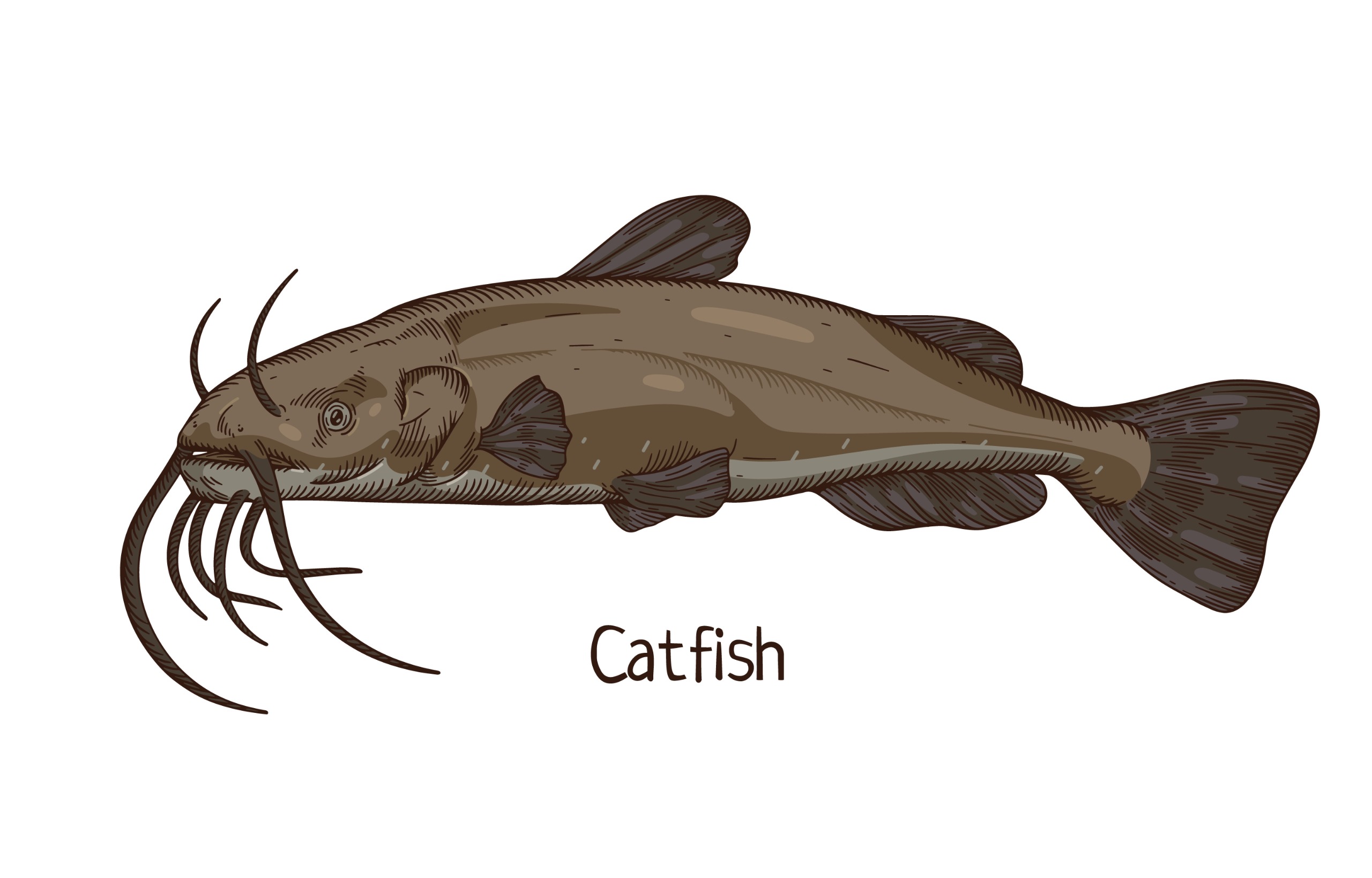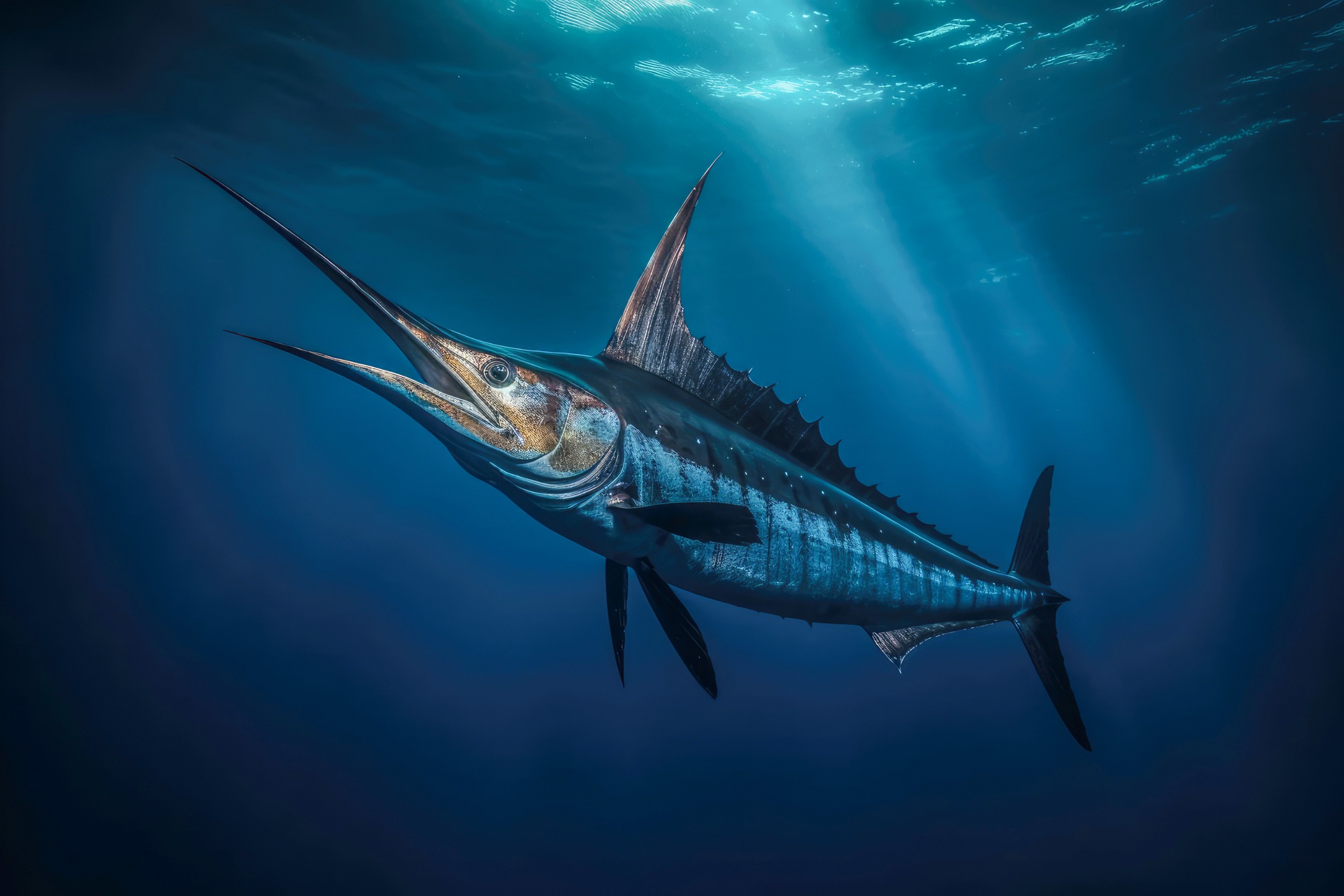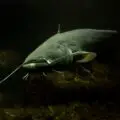Catfish and swordfish are two separate species of fish with different physical traits, habitats, behavior, diet, and commercial worth. They are members of different families: catfish belong to the family Siluridae, while swordfish are members of the family Xiphiidae. Swordfish are pelagic and inhabit oceanic waters, whereas catfish prefer freshwater environments like rivers and lakes. Swordfish are significantly larger and are renowned for their impressive size and strength. In addition, swordfish use their long, sharp bills to slash and impale prey, whereas catfish rely on their keen senses and ambush-hunting techniques.

Physical Characteristics
Catfish and swordfish are two different fish species with quite different morphological traits. Catfish have flattened bodies that allow them to move quickly in bottom-dwelling habitats, but swordfish have streamlined bodies that allow them to swim rapidly in open water.
Catfish have numerous big fins that aid in stability and maneuverability, but swordfish have a single extended dorsal fin that aids with stability during high-speed swimming. Catfish and swordfish have different mouth forms.
Catfish have big, vertically extending lips and strong teeth that allow them to catch various prey. On the other hand, swordfish have a large, flat bill known as a sword for hunting and slicing prey.
Another noticeable aspect is the texture of the skin. Catfish have smooth skin that allows them to glide effortlessly in the water. Swordfish, conversely, have rough scales that contribute to their streamlined design and hydrodynamic efficiency and offer body protection.
With diverse body forms, catfish species range in size from small to enormous. Some catfish are only a few inches long, while others can reach lengths of several feet. Swordfish are larger than catfish in general, reaching lengths of 9 to 11 feet and weighing hundreds of pounds as adults.
Habitat
Catfish and swordfish live in quite different aquatic settings with very different traits. Catfish prefer slow-moving or calm waters in freshwater settings such as rivers, lakes, and ponds. They use their flattened bodies and barbels to move and graze in freshwater environments, frequently taking refuge beneath submerged logs or plants.
Swordfish, on the other hand, prefer large oceanic seas and a pelagic lifestyle. They are connected with warm and temperate maritime environments such as the Atlantic and Pacific Oceans, the Mediterranean Sea, and the Indian Ocean.
Swordfish have a wide geographic range and travel large distances due to water temperature, food availability, and breeding circumstances. Catfish prefer shallow to moderately deep freshwater habitats and prefer to live along the riverbed or lake floor.
Some catfish species may migrate into deeper waters for spawning or feeding. On the other hand, swordfish have exceptional diving abilities and prefer deeper offshore waters, sinking to large depths.
They have been observed searching for prey in the mesopelagic zone, which spans hundreds of meters beneath the ocean’s surface. Water conditions and salinity levels also change between catfish and swordfish habitats.
Catfish live in freshwater areas with low salinity levels, using the particular conditions and resources found there. On the other hand, swordfish flourish in saltwater or marine environments, preferring warmer ocean currents and displaying adaptations to marine environmental problems like body temperature regulation and osmoregulation in saltwater.
Behavior
Catfish and swordfish have diverse behaviors that are shaped by their environmental adaptations. Catfish are opportunistic eaters, eating a variety of animals and demonstrating scavenging ability.
They have huge jaws with sharp teeth and use their barbels to sense their surroundings. Swordfish, conversely, are expert predators specializing in fast-moving food such as squid and small fish. They startle and immobilize their victims with their long, flat bills.
Catfish are usually solitary, though some species may exhibit schooling behavior at different phases of development. They form territories and can be violent when it comes to protecting their hiding places or breeding grounds.
Catfish use body movements and chemical signals to communicate. Swordfish, on the other hand, tend to congregate in small groups or schools, which provides benefits such as increased feeding efficiency and protection from predators. Swordfish can also be solitary during hunts or specific life stages.
Migration patterns further distinguish catfish from swordfish. Catfish migrate only a small distance within their preferred habitats due to variables such as seasonality, spawning, or searching for new food sources.
The length and frequency of catfish migrations vary per species. Swordfish are very migratory, traveling large distances across wide oceanic regions. These migrations can cover hundreds or thousands of kilometers, seeking acceptable feeding grounds, excellent nesting places, or ideal temperature conditions.
Diet
Catfish and swordfish have different dietary preferences and feeding behaviors due to their different habitats and anatomical adaptations. The differences in their diets, feeding patterns, and ecological functions will be examined in this comparison.
Catfish are opportunistic feeders who eat a range of things. They are well-known for their ability to consume a wide range of meals, including as small fish, crabs, insects, mollusks, plants, and even decomposing organic waste.
Their huge lips and sharp teeth allow them to capture and swallow various prey items. Catfish are bottom-dwelling fish that have evolved to search for food on the river or lake floor. They use their barbels, fleshy appendages containing taste receptors and sensory cells, to feel food and navigate their environment.
Catfish can perceive vibrations and odors, allowing them to locate prey even in low-light conditions. On the other hand, swordfish have a more specialized diet comprised primarily of fast-swimming game. Most of their diet consists of squid, small fish, and crustaceans.
Swordfish are powerful predators who hunt with cutting blows. They utilize their long, flat bill or sword to slice and stun their victims, making it easier for them to devour them. Swordfish are known for their agility and speed, which allows them to pursue and catch fast-moving prey.
Because of their sleek bodies and powerful tails, they can swim quickly and efficiently, helping them to hunt successfully. Catfish and swordfish both play important ecological roles in their respective ecosystems.
Catfish are bottom-dwelling scavengers that aid nutrient cycling by consuming decaying organic debris. They also help to regulate the populations of small fish, insects, and other invertebrates in freshwater. Catfish are an important food source for larger predatory species.
Commercial Importance
Catfish are commercially highly valuable, particularly in freshwater fishing. It is widely grown in aquaculture systems, making it one of the most important farmed fish in the world. Catfish is known for its mild flavor and firm texture, making it excellent for various culinary dishes. Its low price contributes to its commercial success by appealing to diverse consumers. Catfish is processed into a wide range of products, including fillets, nuggets, and value-added items such as smoked or breaded catfish, which expands its market reach. Catfish are grown in the United States, Vietnam, China, and Nigeria, demonstrating their global commercial significance.
In the seafood market, swordfish commands a high price. It is prized for its massive size, firm texture, and unusual flavor. Swordfish is mostly obtained through commercial fishing operations, where it is highly prized as a valuable catch. The gastronomic appeal of swordfish and its association with gourmet cuisine contribute to its commercial relevance. Because of its premium status, it is a popular choice at high-end restaurants and seafood markets, where it commands a higher price.
Geographical Distribution
Catfish and swordfish have unique geographic distributions, occupying distinct regions worldwide. Catfish species have a diverse geographic distribution, with different species found in different parts of the world.
They can be found in freshwater bodies on all continents, including North and South America, Europe, Asia, Africa, and Australia. Climate, habitat availability, and previous evolutionary processes can all influence the range of catfish species.
Some catfish species, for example, are endemic to specific places, which means they can only be found in those areas and nowhere else on the planet. This vast geographic distribution illustrates catfish’s resilience and ability to live in various freshwater settings worldwide.
Swordfish, on the other hand, have a more restricted range. They can be found in the Atlantic and Pacific Oceans and the Mediterranean and Indian Oceans. They enjoy warm oceanic habitats and live in tropical, subtropical, and temperate climates.
The distribution of these species within these regions can be impacted by factors such as ocean currents, water temperature, and the availability of suitable prey. Swordfish existence in many oceans and seas is affected by their migratory nature and capacity to travel large distances in quest of optimal conditions.
While swordfish have a larger geographic range than some catfish species, their distribution within these regions can still be influenced by local causes. They may favor specific places within their range that give the best conditions for feeding, reproducing, or other ecological needs.
Furthermore, human activities such as fishing techniques and environmental changes can impact the distribution and abundance of catfish and swordfish populations in specific places.
Migration
Catfish often migrate within their watery environments or between interconnected bodies of water. Temperature changes, seasonal variations, food availability, and breeding requirements all influence their travels.
Some catfish species may move upstream or downstream in rivers to find new food or breeding grounds. However, the amount and regularity of migration differ per species, with some being more sedentary than others.
Swordfish are very migratory, traveling large distances across wide oceanic regions. Their migrations can cover hundreds or thousands of kilometers as they seek ideal feeding grounds, mating grounds, and optimal temperature conditions.
Swordfish use their exceptional navigation ability to traverse international borders and navigate over open waters. Swordfish migrations vary in timing and regularity, with some populations migrating seasonally in response to prey availability or breeding cycles.
Catfish are known for their large and long-distance migrations over maritime regions, but swordfish are known for their localized and limited movements within their freshwater environments. Their ecological needs and habitat adaptations determine each species’ migratory behavior.

Reproduction
Catfish are well-known for their nest-building abilities. Male catfish build nests in freshwater habitats such as riverbeds or lake bottoms. They painstakingly build the nests and guard them until the eggs hatch.
Female catfish lay their eggs inside the nests, while males protect the eggs from predators and maintain sufficient oxygenation. This nest-guarding activity persists until the fry, or freshly hatched catfish, are old enough to venture out independently.
Swordfish, conversely, are pelagic spawners, meaning they release their eggs directly into the open water of the marine environment. They do not construct nests or care for their eggs or progeny.
Female swordfish lay many eggs which are then discharged into the water column. Males release sperm at the same time to fertilize the eggs. This reproductive method allows for broad egg distribution and increases the likelihood of successful fertilization.
Catfish and swordfish embryos develop externally once the eggs are fertilized. The larvae are moved by water currents when the eggs hatch. As the larvae of catfish, also called fry, grow and mature, they progressively become juvenile fish. Swordfish larvae undergo a metamorphosis, changing their body form and obtaining adult swordfish characteristics such as long bills or swords.
Conclusion
Physical characteristics, habitat preferences, and ecological roles distinguish catfish from swordfish. Catfish are freshwater predators with flattened bodies and bottom-dwelling behavior, whereas swordfish are oceanic predators with elongated bodies and sharp bills.
Their diverse diets, activities, and commercial significance highlight their conflicting qualities even more. Recognizing these differences is critical for conserving and managing both species, as it allows us to appreciate the diversity of aquatic life and preserve the long-term viability of catfish and swordfish populations.











